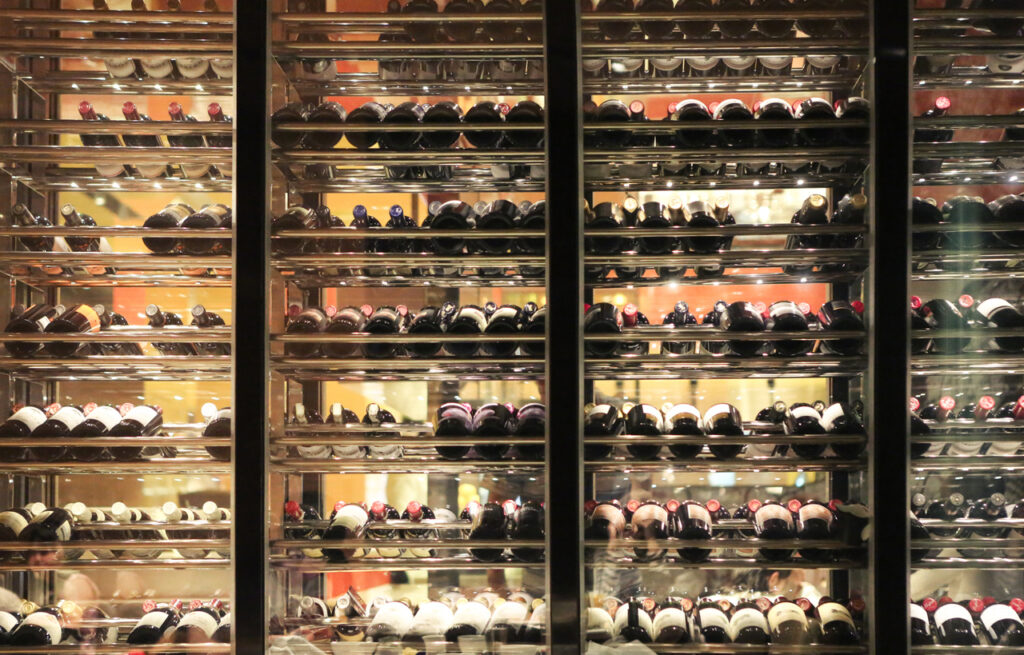Red wines are a beverage steeped in a rich history, with claret wine being one of the more well known iterations.

But if you’re just getting to grips with red wine, it may be a bit confusing when you try to learn a bit more about the term claret.
It seems to mean different things to different people, and often seems to be used to describe other types of wine.
So what is a claret wine?
That is the question that we are going to answer for you today! We’re going to cover claret wine in a little more detail so that you have all the info you need to hand.
We’ll also cover what foods to pair your claret wine with, what the difference is between claret wine and Cabernet Sauvignon wine, as well as how to store your bottle of claret wine.
Let’s take a look at everything there is to know about claret wine!
What Is A Claret Wine?
If you hear the term claret wine, and then look at the label to find that this isn’t on there, it’s perfectly understandable that you would be a bit confused.
So what is a claret wine? Claret is just the unofficial term that is used to describe red Bordeaux wines from the Bordeaux region in France.
Typically, claret refers to a pale red wine that comes from this region.
So where does this term “claret” even come from?
It is thought that the term claret comes from the French word “clairet”, which typically refers to a dark pink wine that comes from Bordeaux.
This term has developed over time to become the “claret” that we are more familiar with today. Claret is typically a British term rather than an American term.
The term claret is often unofficially used to describe other types of red wine, but true claret only refers to red wines that come from the Bordeaux region.
What Is The Difference Between Claret And Cabernet Sauvignon?
There is a major difference between claret and Cabernet Sauvignon, the most notable difference being that claret is simply a term to refer to red Bordeaux wines, rather than a type of grape.
So these types of wines tend to be Cabernet Sauvignon, Cabernet Franc, Merlot, Petit Verdot, and Malbec.
So some claret wines are Cabernet Sauvignon, whereas not all Cabernet Sauvignon are claret.
In order to be given the label of claret, the bottle of Cabernet Sauvignon will need to have been grown, harvested, and produced within the Bordeaux region of France.
On the whole, Cabernet Sauvignon tends to be a complex red wine that is high in acidity, bold, and dry.
What Do You Drink Claret With?

There are a few foods and dishes that you can pair your claret wine with. It will ultimately depend on the variant of red Bordeaux wine that you have opted for.
If you were to select a Cabernet Sauvignon from Bordeaux, it would be best to pair it with fatty foods such as beef, pork, or roast chicken.
Similar to Cabernet Sauvignon, a Cabernet Franc should be paired with fatty foods.
This type of claret will work particularly well with beef burgers, roasted pork, meatballs in a tomato sauce, turkey, roasted duck, grilled lamb, or venison.
A Merlot should be paired with a range of foods, because it is one of the more versatile types of claret wines.
It pairs well with salty foods and fatty foods, as well as tomato based or vegetable based meals.
A Petit Verdot should be paired with nutty dishes, or foods that feature mushrooms, eggplant, black beans, truffles, olives, and kidney beans as ingredients.
It also works well with a range of cheeses, including gouda, cheddar, and gruyere.
A Malbec should be paired with foods that are sweet and spicy in nature. You can’t go wrong with pairing it with barbecue foods, pulled pork, brisket, or any type of spicy curry that takes your fancy.
How To Store Your Bottle Of Claret Wine
Thanks to the natural acidity and tannins in red wines, this means claret wines tend to last you a little longer than rosé, white, and champagne wines.
However, you will still need to store it correctly in order to enjoy the claret.
Ideally, you should store your red Bordeaux wines in a wine cellar. This will give it the cool, dark conditions it needs to thrive and age well over time.
If you don’t have a wine cellar, then a wine fridge will do the trick. If you’re serious about your wine, this will only really be a short term fix.

It will also be worth looking into when your claret wine is intended to be enjoyed.
Not all Bordeaux wines will do well when kept in the dark for long periods of time, with some being intended to be enjoyed after 5 years or so.
So it will be best to work out when you drink your claret wine rather than leave it in your wine cellar or wine fridge for several years.
In Summary
And there you have it! Even though it sounds like it’s a type of wine in its own right, claret is just the unofficial term that is sometimes used to describe red Bordeaux wines.
This is a term that has been popularized by the British, and can sometimes be used to describe other types of red wines that haven’t actually been produced from Bordeaux.
In order to be a true claret wine, however, the red wine will need to have been grown, harvested, and produced in the Bordeaux region of France.
Some claret wines include Cabernet Sauvignon, Cabernet Franc, Merlot, Petit Verdot, and Malbec. Claret is typically used to describe a light red wine.
So the next time you think about ordering claret off the menu, why not pay a little more attention to the label to see what variant of red Bordeaux wine you’ll get!

